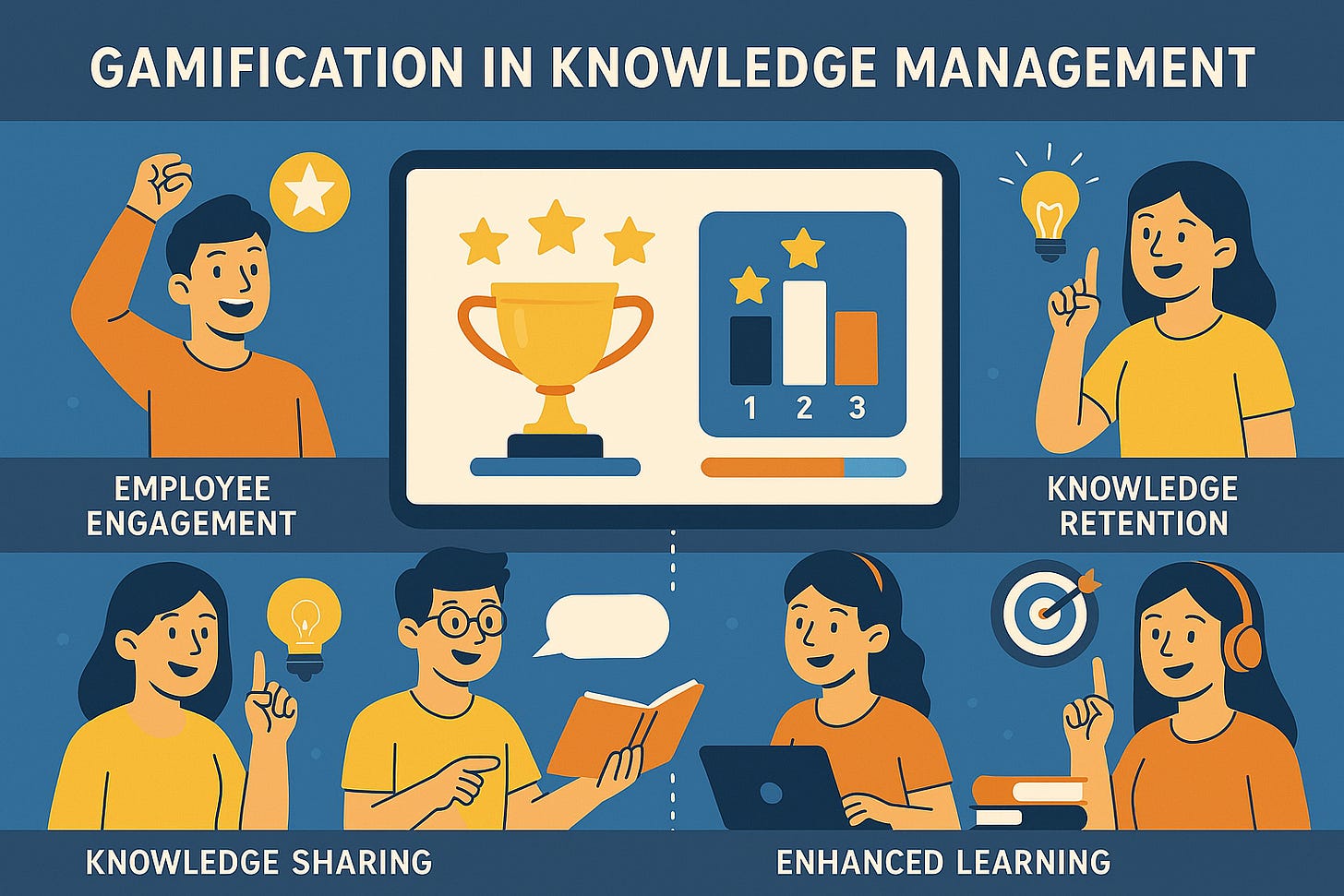The Benefits of Gamification in Knowledge Management
After several of these posts, I hope we can agree that knowledge management (KM) is the process of creating, sharing, using, and managing an organization's knowledge and information. We know that effective KM can improve productivity, increase innovation, and enhance decision-making. However, getting employees to actively engage with knowledge management systems can be a challenge. This is where gamification comes in. What the heck is Gamification? Well it's the process of applying game-like mechanics to non-game contexts. It has become an increasingly popular strategy for knowledge management specialists to enhance employee engagement and motivation in KM systems. In this post, we will explore the benefits of gamification in knowledge management and provide practical advice for knowledge management specialists looking to implement gamification strategies in their organizations.
As was mentioned in the intro above, gamification can encourage employee engagement. Sometimes, traditional knowledge management systems can be dull and unengaging, making it difficult for employees to stay motivated and actively participate. If you introduce gamification, however, you can provide an interactive and competitive learning experience that motivates employees to engage with your systems and seek out information.
What about knowledge retention? Well, gamification can also improve that. When you provide a more engaging and memorable learning experience, you can help employees to retain the information they have learned and apply it to their work. When employees are actively engaged in learning, they are more likely to remember the information they have learned and apply it to their work.
Games are fun. Many games are also competitive. By integrating the competitive mechanics of gaming within your KM systems, you can incentivize employees to share their knowledge and expertise, which can help to build a culture of knowledge sharing within your organization. This can improve collaboration, encourage innovation, and increase productivity.
Finally, gamification can enhance learning by breaking down complex concepts into smaller, more manageable pieces. By providing immediate feedback and rewards for progress, gamification can help employees to stay motivated and engaged in the learning process. This can lead to a more effective and efficient learning experience, as employees are able to absorb information at their own pace and in a way that suits their individual learning style.
Let's take a look at some examples of successful Gamification Strategies:
Duolingo
Duolingo is a language learning app that uses gamification to make learning a new language more fun and interactive. The app uses a variety of game-like mechanics, such as points, badges, and leaderboards, to motivate users to learn and track their progress. Duolingo has been incredibly successful, with over 300 million registered users worldwide.
IBM
IBM has successfully gamified learning by using digital badges to incentivize learners. These badges represent various learner achievements and can be instantly shared on social media, further motivating learners to earn them. In fact, IBM's digital badge program has proven to be highly effective, with 87% of participants reporting increased engagement as a result.
Deloitte
At Deloitte, leaderboards are utilized to aid employees in developing their soft skills. Considered as one of the crucial components of a gamified experience, leaderboards exhibit the participants' rankings against their peers. Once employees complete an activity, they can access a list of the top 10 performers, with the list resetting every week to encourage new competitors.
How can you use gamification in your organization to enhance your KM systems and strategies?
Start Small
When implementing gamification in knowledge management, it is important to start small and focus on a specific area or topic. By starting with a small pilot program, you can test the effectiveness of gamification and make adjustments as needed before rolling out a larger program.
Define Clear Objectives
Before implementing gamification, it is important to define clear objectives and goals for the program. What do you want employees to learn? How will you measure success? By defining clear objectives, you can ensure that the gamification program aligns with your overall knowledge management strategy.
Keep it Simple
To ensure that gamification is effective, it is important to keep it simple and easy to understand. Try to design simple and intuitive game mechanics that employees can easily grasp and engage with.
Measure Results
It is important to measure the results of your gamification program. This can help you to identify areas for improvement and make adjustments as needed. By measuring results, you can also demonstrate the effectiveness of gamification to senior leaders and stakeholders.
Gamification has become an increasingly popular strategy for knowledge management specialists looking to enhance employee engagement, improve knowledge retention, facilitate knowledge sharing, and enhance learning. Successful gamification strategies like Duolingo, IBM's digital badges, and Deloitte's leaderboards demonstrate the effectiveness of gamification in achieving these goals. When implementing gamification in knowledge management, it is important to start small, define clear objectives, keep it simple, and measure results to ensure the program aligns with your overall knowledge management strategy and is successful in achieving its goals.



